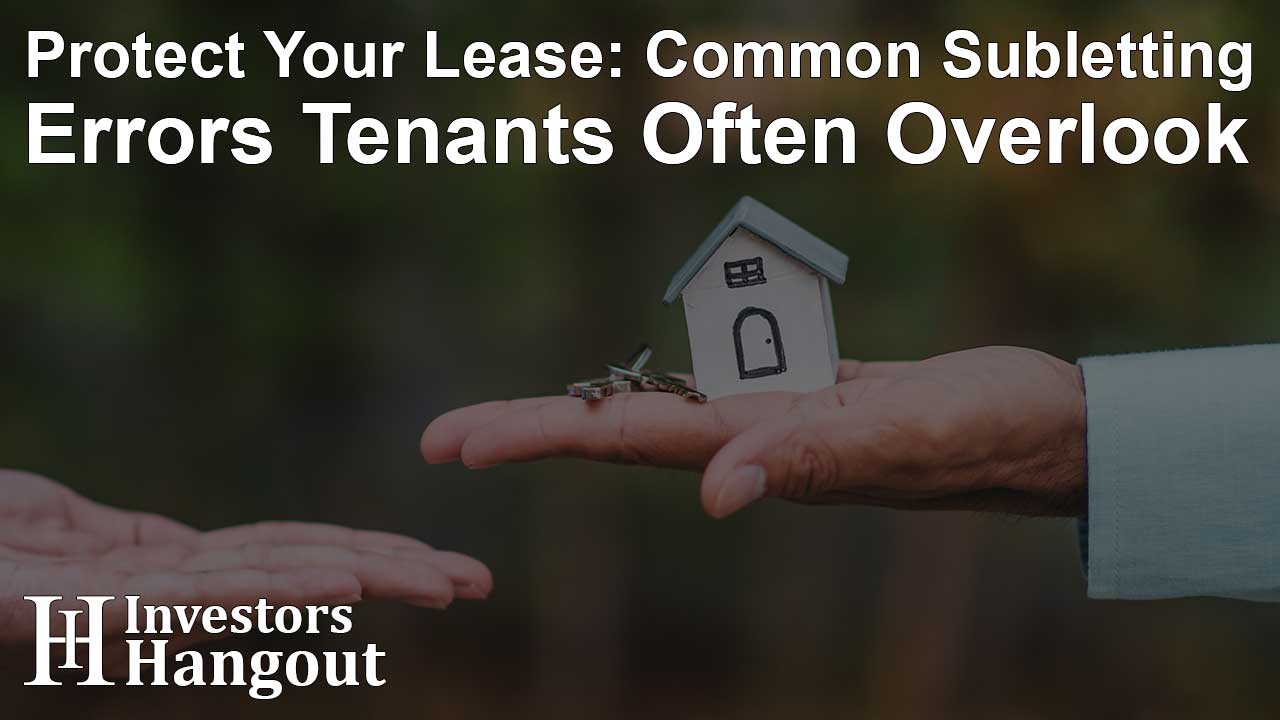Protect Your Lease: Common Subletting Errors Tenants Often Overlook

Subletting your rental apartment can be a highly beneficial solution for a variety of situations, such as temporary relocation for work, extended travel, or unforeseen personal circumstances. However, it requires careful and thorough planning, as well as strict adherence to both legal and financial responsibilities to ensure everything proceeds smoothly. The process begins with a detailed review of your lease agreement to understand any restrictions or requirements related to subletting, including whether your lease agreement prohibits subletting or mandates landlord approval. It is equally important to familiarize yourself with state and local laws, which can vary widely and may include specific provisions for rent controlled cities or buildings with four or more units. Equally critical is the careful vetting of your prospective subtenant searching for apartments for rent through comprehensive background checks, credit assessments, and verification of rental history to avoid entrusting your rental property to just anyone.
Understand Your Lease Agreement First
Before beginning the subletting process for your rental apartment, it’s essential to carefully review your lease agreement and fully understand all terms related to subletting and rent collection. Every lease is a legal document that outlines your tenancy, including the subletting conditions, terms, and any clauses that state if it is permissible. In some cases, lease agreements may explicitly state that subletting is prohibited, while in other cases, it may only allow subletting under specific terms or prior landlord written consent. It is important to understand each subletting clause in detail to avoid a legal dispute, lease violation, or other issues.
If your lease permitting subletting, certain factors are important to note. You will almost always need your landlord's written consent before subletting apartments. This is legally required in many states and municipalities and protects tenants and landlords alike. State guardianship laws treat consent to subletting as permission to enter a lease. Protecting yourself and obtaining a subleasing permit will allow you to avoid possible misunderstandings, disputes, and unlawful detainer actions. These documents become vital proof of your landlord's signed consent to sublease signed. This avoids future disputes, misunderstandings, and evictions.
Screen Your Subtenant Carefully
Finding a reliable subtenant is necessary. It is never to be treated lightly, nor a matter of convenience. A subtenant could bring problems, could even be costly. That is why a grounded, solid prospective subtenant should be analyzed profoundly. A credit profile could show if a subtenant is capable of paying rent regularly and on time. Talking with prior landlords is also necessary to know if a prospective subtenant has a record of respecting rentals, of timely payment, and of maintaining rentals in good condition.
Most of the repeats above are important to know if the prospective subtenant will likely care for the rentals, be respectful, and pay promptly. The time and commitment devoted to this process will help in reducing problems related to subletting. Risks are here for the primary tenant. The subtenant is not accountable for the unit; the primary tenant is. If the subtenant does not pay removable rent or pays it in an obnoxious way, the primary tenant is liable. Very serious problems can arise if a primary tenant picks a subtenant with a warped character.
Document the Condition of the Rental Property
To avoid getting blamed for damages that were there before you rented out your sublet, you should consider documenting the condition of your rental property before the subtenant moves in. This means taking detailed photos and videos of all the rooms, paying special attention to the condition of the wear, tear, and damages. Capture the vulnerable areas and the minor imperfections that are likely to be missed. These should have a timestamp for proof of when the documentation was created. The care you take to record the property condition will prove critical if a disagreement comes up about what condition the property is in when the subtenant moves out.
Along with visual records, documenting the state of a rental property with a detailed written checklist is essential. This checklist should address every room, every major feature, and should capture every concern and deficiency. This checklist should also be signed by both you and the subtenant and reviewed specifically to show mutual acknowledgement of the property's state at the time of signing. This signed checklist called a checklist helps minimize the potential for future disputes and clarifies the obligations of each party so it’s easier to track at the end of the sublease period to assess damages. Such precise and documented steps safeguard you legally and financially during subletting.
Maintain Communication with Your Landlord
Showing your landlord that you, in regards to communicating and sharing information, value open and honest communication is fundamental to assuring everything goes smoothly. Let your landlord know you wish to sublet an apartment and give your landlord information, including contact information and anticipated moving date, about the possible subtenant. This is an important step in assuring that a mutual relationship is formed without surprises. Make sure to give your landlord an opportunity to ask questions so they can share any concerns. This will assist everyone in making sure that there are no surprises later. Surprises, in this case, can include misunderstandings, landlord-tenant issues, or legal concerns.
Forward-thinking about a potential subtenant allows everyone to receive any potential legal issues regarding subletting an apartment. Mentioning potential sublease issues to the landlord should come with your subletting proposal and help with resolving misunderstandings. Promptness with having open communication gives both sides an opportunity toward problem resolution, offered an opportunity of mutual regard. This dependent relationship of stated communication is the goal and is sandboxed in formal subletting.
Also, keeping in touch with your landlord allows you to know if there are any updates to building policies, maintenance timings, or any other details that may affect your subtenant’s experience. This level of communication helps to keep everyone in the loop and allows for a smooth and uncomplicated subletting process for all involved.
About The Author
Contact Kelly Martin privately here. Or send an email with ATTN: Kelly Martin as the subject to contact@investorshangout.com.
About Investors Hangout
Investors Hangout is a leading online stock forum for financial discussion and learning, offering a wide range of free tools and resources. It draws in traders of all levels, who exchange market knowledge, investigate trading tactics, and keep an eye on industry developments in real time. Featuring financial articles, stock message boards, quotes, charts, company profiles, and live news updates. Through cooperative learning and a wealth of informational resources, it helps users from novices creating their first portfolios to experts honing their techniques. Join Investors Hangout today: https://investorshangout.com/
